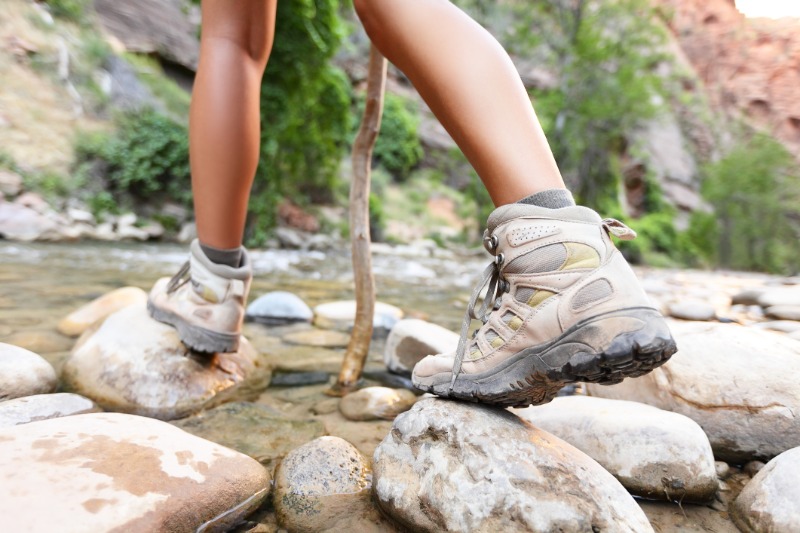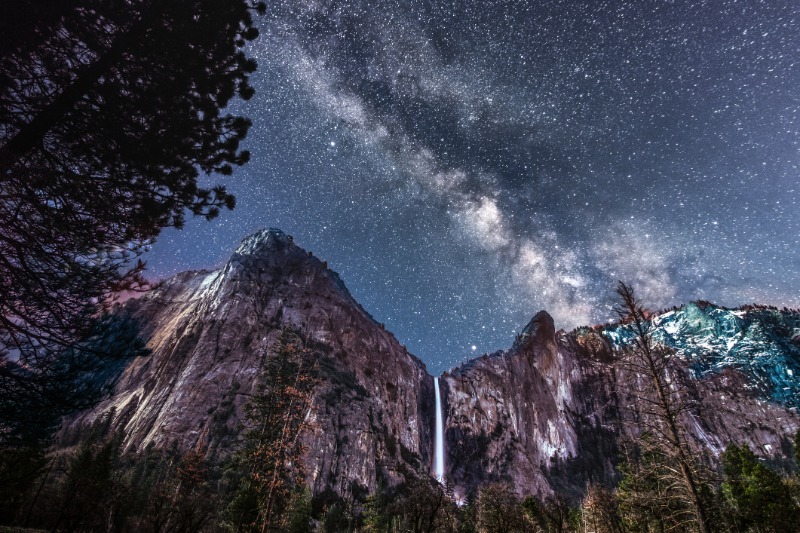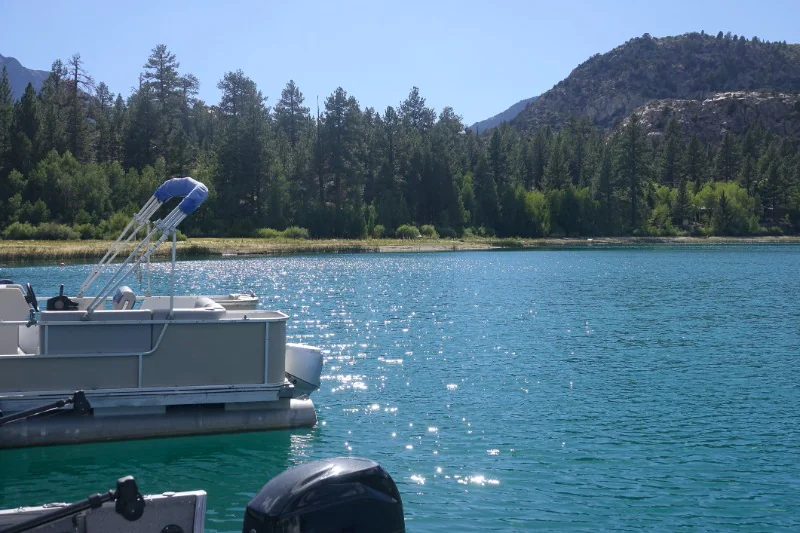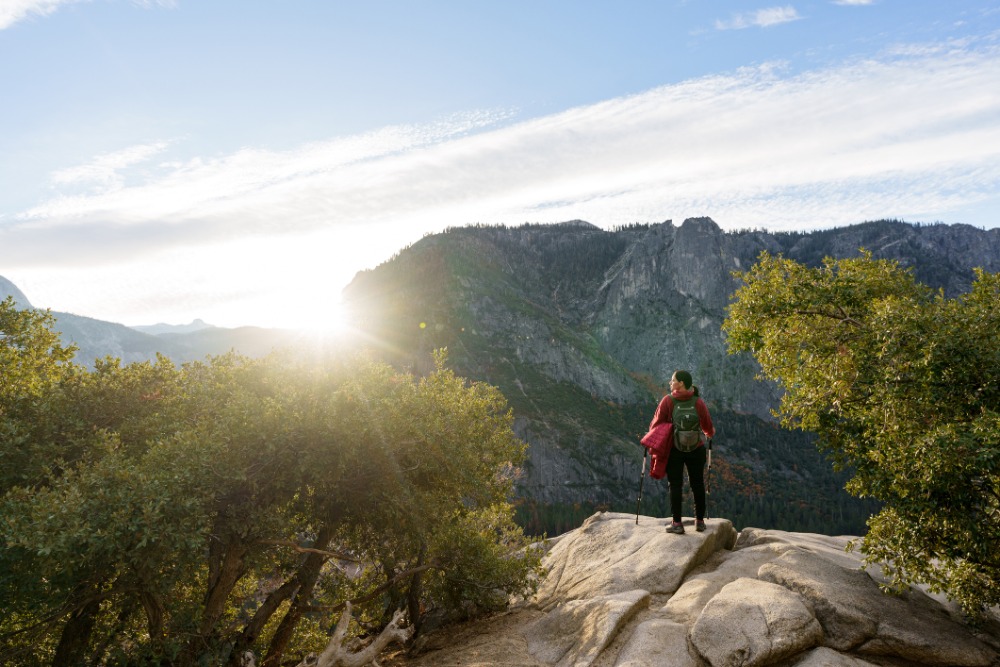Yosemite National Park doesn’t need much introduction. As one of the country’s most enchanting natural splendors and a UNESCO World Heritage Site, this natural area is on the bucket lists of outdoor enthusiasts all over the world. The park’s impressive waterfalls, gigantic rock formations, granite cliffs, and lush meadows attract more than four million tourists every year.
But what about living in Yosemite? Ask any of the park rangers residing in the valley, and they’ll tell you that waking up at daybreak to watch the sunrise over Half Dome never fails to delight and park employees get to hike the iconic Mist Trail every day as a pre-work run. Would-be residents save up for months or even years just to spend a few days in this gorgeous valley.
On the other hand, the day-to-day living experience in Yosemite has some fundamental differences from your typical urban or suburban life. The people who call the place home are willing to forego the advantages and comforts of living closer to built-up areas due to their desire to connect with the natural world and lead a quieter life. If that speaks to you, read on to know what it’s like to live in and around Yosemite Valley.
Table of Contents
Who Lives Here?
Yosemite Valley is home to around 1,700 people. The population is relatively young and residents are mostly employed by the National Park Service (NPS) or the local tourism and hospitality industries. In the valley, employment opportunities almost exclusively revolve around the National Park and the concessionaires conducting business within.
A small population bonded by a love of nature. Yosemite’s environment and prevailing conditions result in a small, tight-knit community of adventurous individuals with a lot of shared experiences. Residents live within proximity to each other and nature. This close connection cultivates camaraderie, mutual support, and a strong community vibe. The population also grows seasonally from June to August – the park’s busiest months – due to an influx of youths the park employs to help handle the volume of guests visiting in the summer.
Retirees, park employees, and business owners live in the gateway towns. More people live in the surrounding towns such as Oakhurst, Groveland, Midpines, Mariposa, and Foresta. Aside from providing accommodations for the National Park’s visitors, many of these towns’ properties are occupied by retirees from all over the US. Small businesses such as retail, light manufacturing, and home enterprises also contribute to the local economy in these locales.
Community Amenities and Services
Schooling and Education
Educational opportunities within Yosemite Valley are limited. The Yosemite Valley School serves K-8 students and has a unique learning environment closely tied to the park’s natural resources. For high school and middle school education, students typically travel to the gateway towns of Mariposa and Oakhurst or enroll in homeschools.
Healthcare and Medical Services
Healthcare in Yosemite is provided by the national park’s clinics and emergency services. For more comprehensive medical care, residents often travel to larger towns like Oakhurst or Mariposa. To see specialists, however, residents travel to cities like Modesto 84 miles west. The remoteness of Yosemite puts a strong emphasis on preventive care and self-sufficiency.
Benefits of Living in a Natural Environment
Despite the limited amenities, there are considerable benefits to living in Yosemite. The place caters to different lifestyles, whether you’re an adventurous thrill seeker, a nature enthusiast who enjoys a relaxing hike, or a city dweller looking for periods of tranquility. Outdoor activities are abundant and everyone from senior citizens and children to those looking for adrenaline rushes can enjoy them. Simply waking up to the sound of birdsong and seeing the beautiful landscape just a few minutes into your morning walk is enough of a daily mood booster for many.

There’s a large and ever-growing body of research that indicates spending time in natural surroundings improves a person’s quality of life. Psychologically, it’s an antidote for stress. This manifests in lowered blood pressure and cortisol levels, reduced excitation of the nervous system, and enhanced immune system function. It’s even been shown that households near protected areas tend to be wealthier. These studies confirm what we already instinctively know: being close to nature is good for you.
Outdoor Activities
Without a doubt, the best thing about living in the area is the outdoor environment. Yosemite National Park is one of the most inspiring natural areas on the planet. Keep in mind that Yosemite Valley is where most of the buildings and employee housing are located, but it only comprises about five percent of the national park’s land area.
Here are just a few of the many things to see and do here, but they should give you some idea of the wonders that residents enjoy daily.
Witness the Natural “Firefall” at Horsetail Falls
For a few weeks every year starting in February, the already beautiful Horsetail Falls glows bright orange, making it appear like molten rock is falling from its crest. What makes this phenomenon possible are the setting sun’s rays and the tilt of the Earth during this specific time of the year. It’s a much-anticipated event that needs a few conditions to align, but the payoff is just majestic when you get to see it.
Stargaze at Sentinel Dome or Glacier Point

Sentinel Dome offers the best panoramic, unobstructed view of the heavens in Yosemite. With clear skies, you can see the Milky Way with the naked eye. But aided by a telescope, other objects like nebulae, star clusters, and planets come into clear view. Many astrophotographers set up their equipment on Glacier Point from July to August. From this vantage point, you can get stunning long-exposure photos of the Milky Way arching over Half Dome and the surrounding landscape.
Walk the Valley Loop Trail in the Fall
Speaking of landscape photography, take a camera in hand or even just your phone and head to Valley Loop Trail. The leaves of Big Leaf maples and Dogwood reach their peak color – a mix of bright yellow, peach, deep red, and even purple – from mid to late October. This trail loops around a section of the Merced River so you’ll have ample opportunities to capture the water, the foliage, and the park’s iconic granite formations like El Capitan–all in one frame.
Go Snowshoeing in Mariposa Grove
Snowshoeing at the Mariposa Grove of Giant Sequoias is always fun and inspiring. Even in the winter, the grove has multiple trail options and designated parking. The snow on the ground contrasts magically with the towering evergreens and their huge trunks. Make your way through the tranquil paths to see the 3,000-year-old Grizzly Giant, the Fallen Monarch, and other iconic trees on the Upper Grove.
Living in a Remote Area
Living in Yosemite is a beautiful and almost dreamlike experience, but it requires significant lifestyle adjustments that we won’t gloss over. If you’re looking at Yosemite, CA real estate, there are considerations that you should keep in mind.
The area is remote. Amenities commonly found in urban settings like advanced healthcare facilities, large retailers, and diverse dining options, are limited. The nearest large grocery store is an hour away from Yosemite Valley. You need to drive for 90 minutes to watch a movie at a cinema or get your phone repaired. It’s often the case that residents plan trips to nearby towns for services and supplies. For those looking to live here, the trade-off of having a spectacular natural location and having to travel a little further for amenities is more than worth it.
Essentials cost more. Another consequence of Yosemite Valley’s remoteness is that you have to pay a little more for everything. Since most supplies need to be transported from places at least an hour away, groceries and dining are slightly more expensive compared to urban areas. Groceries and fuel are cheaper in the gateway towns, so we suggest getting your essentials outside of Yosemite. This is easily done on a weekly or biweekly setup. For residents who don’t work at the national park, housing costs are the most significant expense due to the limited supply.
Housing is limited. Housing in Yosemite Valley varies and is heavily influenced by employment. Save for a few grandfathered-in private properties, most homes are reserved for park employees. Depending on position, accommodations provided to park workers are, in order: tent cabins, WOBs (cabins with communal bathrooms), dorm rooms, rooming houses, and studio apartments. Consult with a local realtor to find houses for sale in Yosemite, CA.
Workers are given housing priority in the valley. While the park owns all the buildings within Yosemite, most of the businesses are contracted out to concessionaires. This includes food, retail, services, and lodging. Workers still pay rent for accommodations, but at a much smaller rate than a non-employee would be charged for. They also get their basic needs and services from these concessionaires.
Residential Areas around Yosemite
You will find many more residential areas in Yosemite’s gateway towns. A number of gated communities feature vacation properties perfect for a longer stay in the area. There are also historic homes close to the groves of Giant Sequoias. Even on the outskirts of the valley, living in the area is a wholly unique experience. Here are some of the communities surrounding Yosemite Valley.
Mariposa
Mariposa is a gateway town 43 miles away from Yosemite, found between Groveland and Oakhurst. Mariposa’s old mines and gold rush history are an integral part of the Sierra Nevada region’s past, a reason why it’s the county seat. Mariposa is distinctly the only county in California with no permanent stoplight, which should give you an idea of the pace of life in this town. The Lushmeadows area is one of the town’s well-known neighborhoods known for its rustic homes, sprawling estates, and two lakes where residents pitch tents, go fishing, and have picnics.
Oakhurst
Oakhurst is the largest gateway town to Yosemite located around 50 miles by road from the valley. Visitors from southern cities like Los Angeles and Fresno come through here for lodging, a quick fast food stop, or some last-minute shopping. Yosemite residents occasionally make their way to Oakhurst for supplies and retail opportunities since it’s where you can find the nearest malls. The sparsely populated Stillmeadow community in the southern part of town has large homes with clean wooden finishes and welcoming fireplaces.
Groveland
Groveland is another charming gateway town 30 miles from the western entrance of Yosemite National Park. It has a charming, historic downtown area, a welcoming community, and ample amenities including grocery stores and restaurants. The town most commonly gets visitors from San Francisco and Sacramento dropping by before heading further east to Yosemite. Groveland has a number of gated communities that have a rich mix of rustic and modern houses. Pine Mountain Lake is the town’s largest neighborhood. It’s a private community with a lake, marina, golf course, and even its own airport.
Midpines
Midpines is a small community just 25 miles from Yosemite. It’s a popular camping area for outdoor enthusiasts because it’s close to the national park and has affordable lodging options. Amidst the area’s slopes, you’ll find Ranch-style and rustic houses surrounded by towering conifers along Sherlock Road, Quail Lane, and Whitlock Road.
Ahwahnee
Ahwahnee is your quintessential rural mountain town. This small community northwest of Oakhurst has a number of small to medium-sized single-family homes with large front and backyards. Properties are sparse but large in Ahwahnee Estates. Many of these rustic homes have spacious interiors with high wood beam ceilings.
Bass Lake

Just east of Oakhurst is the 2.49 square mile Bass Lake, a popular destination for both Yosemite residents and visitors. In the national park, motorized boats are only allowed in the Hetch Hetchy Reservoir and a few rivers while most water sports are prohibited. Bass Lake fills this niche. Here, visitors can rent motor boats and jetskis, dine by the lakeside, then rest in a holiday home by the lake. This community has gorgeous lakeside neighborhoods like Falls Beach and Willow Cove. Properties on the shoreline are directly connected to the docks.
Catheys Valley
The rolling fields and farmsteads of Catheys Valley lie around 50 miles southwest of Yosemite Valley. Properties in this agricultural area include expansive ranches, some of which have accommodations in the form of ranch cottages, bed and breakfasts, and guest houses on picturesque farmland that offer privacy and a glimpse of the scenic rural lifestyle.
There are a number of other privately owned communities with properties for sale or rent in the nearby unincorporated areas like Yosemite West, Wawona, Foresta, and El Portal.
Explore Mountain Homes with Yosemite Realty
Living in Yosemite, one of the most amazing places on Earth is well worth it for those who want something more than what most urban communities offer. If you’d like to explore homes for sale in Yosemite, CA or the surrounding areas call 209.966.5397 or leave us a message here. Together we can open doors to a majestic life in this special part of California.

